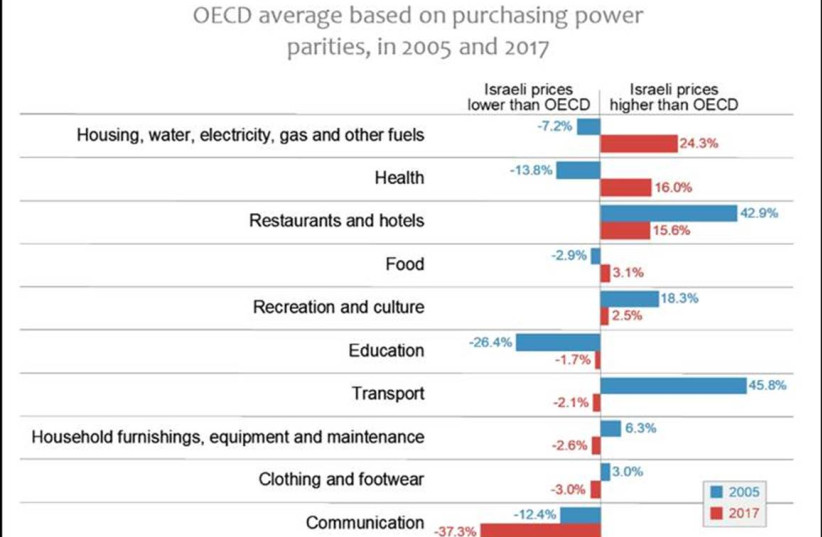How expensive is living in Israel? Less than you thought
 Percent gap between exchange rates and purchasing power parities. (credit: Courtesy)
Percent gap between exchange rates and purchasing power parities. (credit: Courtesy)
 Price gap between Israel and the OECD. (credit: Courtesy)
Price gap between Israel and the OECD. (credit: Courtesy)  Price gaps between Israel and the OECD. (credit: Courtesy)
Price gaps between Israel and the OECD. (credit: Courtesy) Average annual inflation rates. (credit: Courtesy)
Average annual inflation rates. (credit: Courtesy)





Comments are closed.